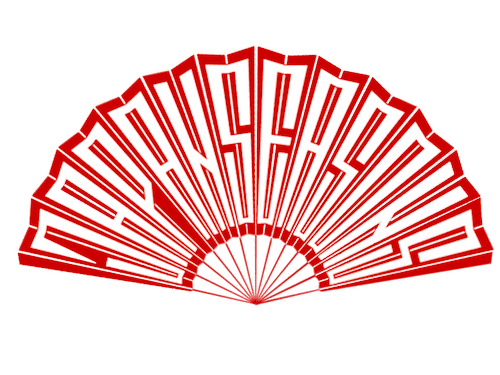Tokyo in Japanese means the Eastern Capital. This name was given to the samurai city of Edo after the capital was moved here from Kyoto in the second half of the 19th century. The largest city in Japan never ceases to amaze travelers with its cleanliness, convenient transportation, and friendliness of the locals who are ready to overcome language barriers and help their foreign guests. Tokyo attracts everybody interested in modern Japan: fans of contemporary architecture and street fashion, video games, and unusual cafes.
- Tours
- 10-Day Tour to Japan
Anytime Tour “Japan 10-Day Tour Experience”
Discover Japan: 10-Day Tour!
Japan is a land of stunning beauty and endless fascination, where modern skyscrapers stand beside ancient temples, and traditional cuisine delights every palate. This tour is perfect for both first-time visitors and returning travelers. Explore Tokyo’s lively streets, the awe-inspiring Mount Fuji, and cultural treasures in Kyoto and Nara. Don’t miss the historical grandeur of Himeji, and enhance your trip with various engaging workshops.
Welcome to the enchanting world of Japan!

CUSTOMIZED ITINERARY FOR YOUR DATES
Dates
- Multi-day Tour
Duration
- 10 days / 9 nights
Price
- Request
Daily itinerary
Day 1
Transfer to Tokyo
Check-in at the hotel, rest
Day 2
Meet your tour guide at the hotel lobby
Tokyo Sightseeing: the historic Asakusa district, Sensoji Temple with iconic Kaminari-mon Gate, Japanese garden, famous Shibuya crossing, and the luxurious shopping and dining in Ginza
Return to the hotel

Tokyo

Sensoji Temple
Sensoji Temple, located in Tokyo’s historic Asakusa district, is one of the city’s most revered and iconic landmarks. Believed to have been founded in the 7th century, the temple is dedicated to the Bodhisattva Kannon, the Goddess of Mercy. As you approach the temple, you pass through the vibrant Kaminarimon Gate, adorned with a massive red lantern. A bustling market street called Nakamise-dori leads you to the temple’s main hall, where visitors can admire the intricate architecture and serene atmosphere. Sensoji Temple is not only a religious site but also a cultural treasure, offering a glimpse into Tokyo’s rich history and spiritual heritage.

Shibuya Area
Shibuya scramble crossing is one of the busiest crossings in Tokyo. The green light comes on from four directions at once, and several hundred people (during peak hours, the number can reach 1,000) rush simultaneously in all directions, managing to dodge each other with ease built up over the years.
For its picturesque yet orderly crowds, the crossing is beloved by filmmakers, and people worldwide are familiar with it from TV series, movies, and commercial videos. The best spot to watch the hypnotic flow of people is the Starbucks coffee shop on the 2nd floor of the building on the north side of the crossing.
There is also a statue of the faithful dog Hachiko near Shibuya Station, where he used to meet his master, a professor at Tokyo University, every day. After the professor’s sudden death, the dog came to the station every day for nine years, waiting for his master to return. Hachiko became the symbol of loyalty.
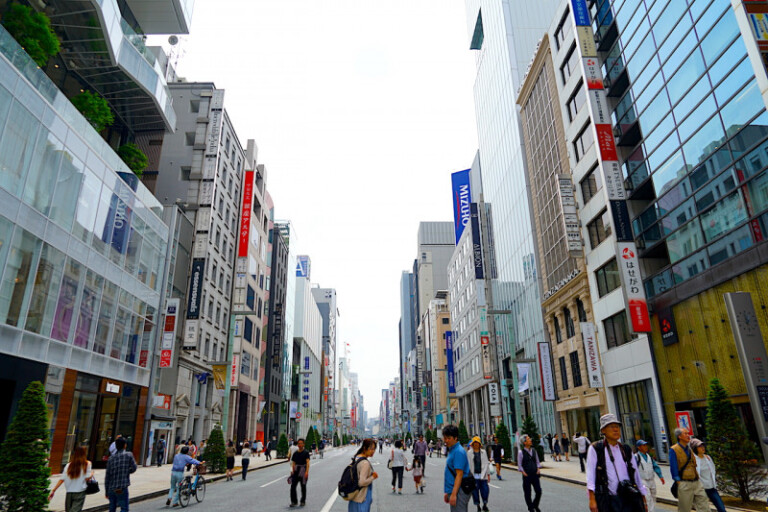
Ginza District
Ginza is Tokyo’s most luxurious shopping district, home to prestigious department stores, world-famous designer boutiques, coffee shops, and traditional Japanese restaurants. People come here to learn about the latest high fashion trends and enjoy the creations of the best architects worldwide.
At the same time, Ginza is an art lover’s paradise. There are about 200 art galleries and Kabukiza Theater, which still regularly hosts Kabuki theater performances.
Day 3
Meet your tour guide at the hotel lobby
Transfer to Fuji-Kawaguchiko area
Fuji-Kawaguchiko Sightseeing: enjoy stunning views from Chureito Pagoda and the serene beauty of Lake Kawaguchiko
*You can see Mount Fuji only on clear days
Check-in at the hotel
Dinner at the hotel, relax at hot springs

Chureito Pagoda
Chureito Pagoda is a five-story pagoda located in Arakura Sengen Park, built in 1962. It is a popular tourist destination, offering stunning views year-round. The pagoda is part of the Arakura Sengen Shrine. Standing at a height of 19.5 meters, the top of the pagoda against the backdrop of Mount Fuji’s snowy peak is one of the most iconic views of Fuji, captured in numerous paintings and photographs.
Day 4
Meet your tour guide at the hotel lobby
Fuji-Kawaguchiko Sightseeing: visit a traditional village and marvel at the beautiful Shiraito Falls
*You can see Mount Fuji only on clear days
Transfer to Shinkansen bullet train station
Move to Kyoto by Shinkansen
Check-in at the hotel
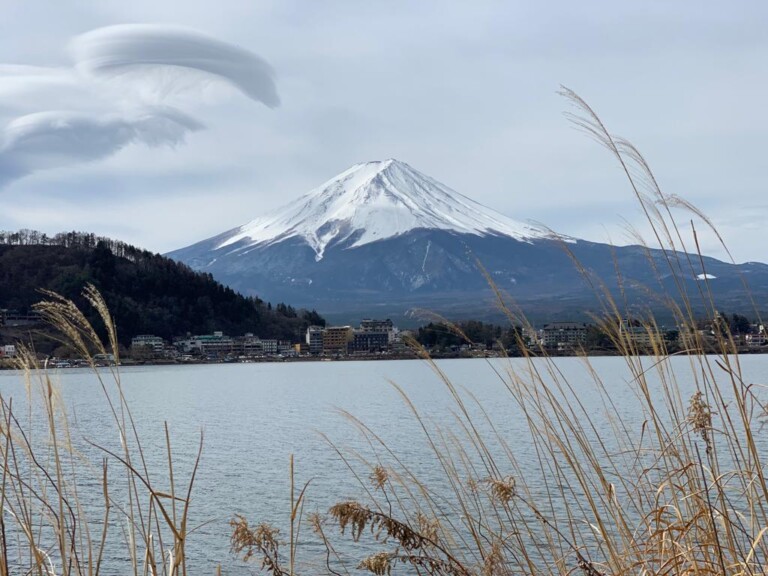
Mount Fuji
Fuji is an active stratovolcano on the Japanese island of Honshu, 100 kilometers southwest of Tokyo, on the border of Shizuoka and Yamanashi prefectures. The height of the volcano is 3,776 m. The circumference of the volcano’s base is 125 kilometers, and the diameter is 40-50 kilometers. The crater’s rim is about 500 meters, and the depth is about 250 meters. There are eight peaks around the crater, each with its name. The highest point of Fujisan is Kengamine Peak. The volcano is active; the last eruption was back in 1707-1708.
The mountain and its surroundings are part of the Fuji-Hakone-Izu National Park and have been a UNESCO World Heritage Site since 2013.
There are a Shinto temple, a post office, and a weather station on the top of Mount Fuji.
The mountain has a perfect conical shape and is considered sacred, serving as a religious pilgrimage and a tourism site. For centuries the beautiful outline of Fuji has been a popular theme in Japanese art.
Day 5
Meet your tour guide at the hotel lobby
Kyoto Sightseeing: Kenninji Zen Temple, Daitokuji Temple and its dry landscape garden, Gion Geisha district, Yasaka Shrine
Return to the hotel
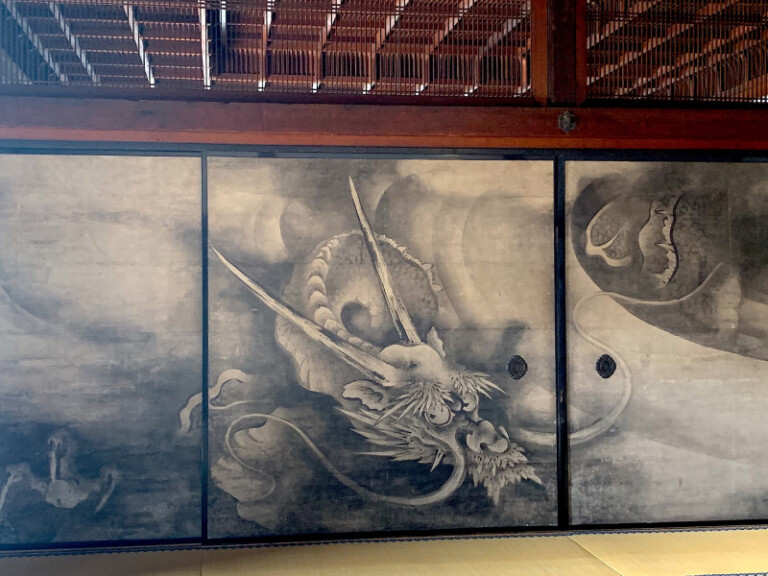
Kennin-ji Temple
Kennin-ji Temple is the oldest Zen Buddhist temple in Kyoto, built in 1202 by the founder of the Rinzai School, Monk Eisai. Located in the south of Geisha District Gion, the complex occupies a vast area and is an example of a classic Zen Buddhist temple. The dry gardens surround the main hall. There is also a tea ceremony garden and a small tea house. Prominent artists painted the sliding doors fusuma. You can move from the main hall to the Dharma Hall, where the ceiling is decorated with a breathtaking picture of two dragons. It was the temple’s 800th anniversary present.

Daitoku-ji Temple
Daitoku-ji Temple is one of Kyoto’s largest Zen Buddhist complexes, founded in the early 14th century. The history of Daitoku-ji is connected to the history of the Japanese military class (samurai) and the tea ceremony. More than twenty small temples are on its grounds, but only a few offer access to their treasures. One of them is Daisen-in. Its stone garden is considered one of the finest in Japan, and the famous tea master Sen no Rikyu himself visited here. In a small room are the wise sayings of the monk Takuan inscribed on scrolls. He was a close friend of swordsman Miyamoto Musashi and the author of “Writings of the Zen Master to the Sword Master.”
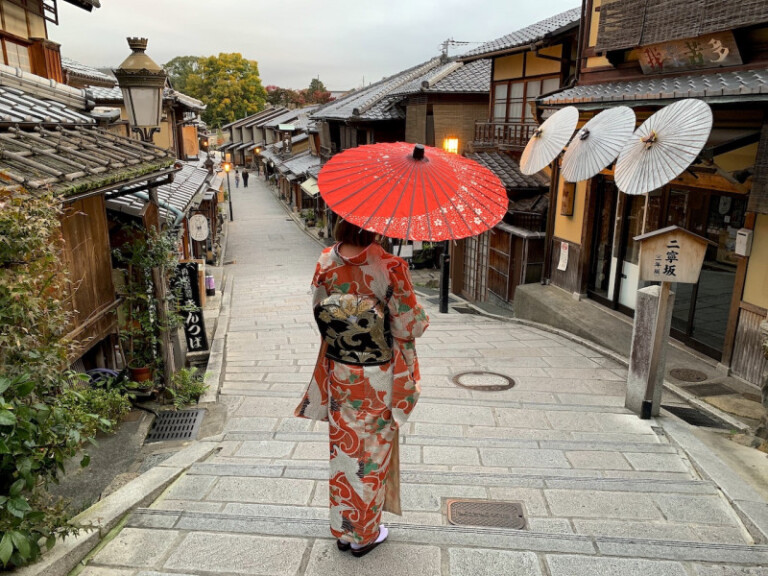
Gion (Geisha District)
Geisha district Gion is Kyoto’s largest and most vivid geisha district. Its history dated to the Middle Ages when restaurants and tea houses for pilgrims began to open around Yasaka Shrine. The picturesque streets of the district are filled with traditional houses with wooden facades, running rickshaws, geisha, and their apprentices (maiko), who still live in Gion and entertain guests every night with their dancing, talking, and table games.
Day 6
Meet your tour guide at the hotel lobby
Uji and Nara Sightseeing: visit the iconic Byodoin Temple, featured on the ten-yen coin, the majestic Todaiji Temple with its giant Buddha statue, the historic Kasuga Shrine known for its thousands of lanterns, and Nara Deer Park, where friendly deer roam freely
Return to Kyoto
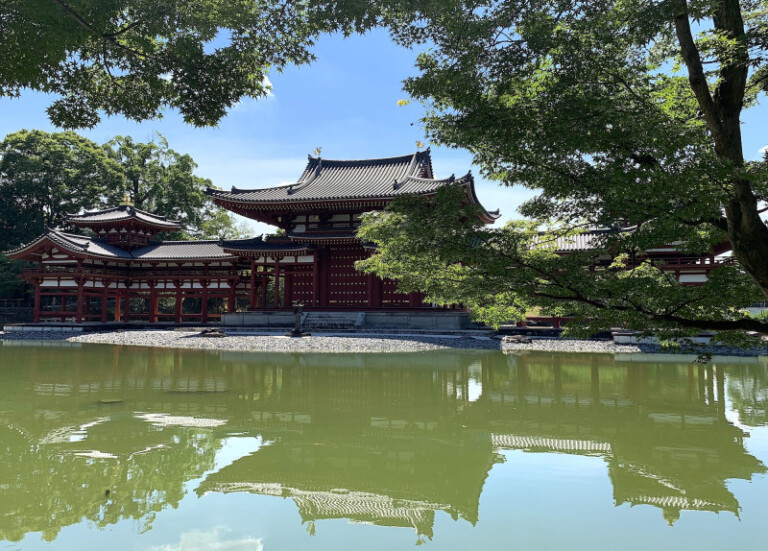
Byodoin Temple
Byodoin Temple is a unique example of Heian-era architecture and a UNESCO World Heritage Site featured on a 10-yen coin and a 10,000 bill. The complex was initially built as a villa for the aristocrats from the Fujiwara family and was later transformed into a Buddhist temple. The grand Phoenix Hall and the surrounding garden were designed to resemble the Pure Land where Amida Buddha lives. In the center of the hall stands a statue of Buddha surrounded by the celestials dancing and playing musical instruments. In the temple museum, you can see the original sculptures of the celestials and other treasures that miraculously survived centuries of wars and fires.

Todai-ji Temple
Todai-ji is a Buddhist temple complex whose main building is one of the largest wooden structures in the world. Built in the mid-8th century by order of the emperor with donations from all over the country, the temple features the biggest bronze statue of Buddha in Japan. Almost all the bronze produced in Japan at the time was used to cast the colossal sculpture. The complex also has several unique wooden structures, including the giant Nandaimon Gate with the famous Nio guard figures, the Bell Tower, and Nigatsu-do Hall. The entire complex is a UNESCO World Heritage Site.

Kasuga Shrine
Kasuga Taisha is one of Japan’s most ancient Shinto shrines, founded in the mid-8th century to protect the capital, Nara. A UNESCO World Heritage site, it is famous for its kasuga-zukuri architectural style, the thousands of stone and bronze lanterns decorating its grounds, and the pristine ancient forest where sacred deer, considered messengers of the deities, roam free.
Day 7
Free day in Kyoto
Day 8
Meet your tour guide at the hotel lobby
Kyoto and Hyogo Prefecture Sightseeing: visit the scenic sandbar of Amanohashidate, explore the charming town of Izushi, and take a walk through the ruins of Takeda Castle
Transfer to Himeji
Check-in at the hotel
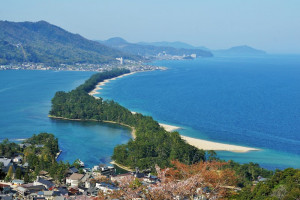
Amanohashidate "Heaven's Bridge" Sandbar
Overgrown with pine trees, a centuries-old narrow sandbar in Miyazu Bay is one of Japan’s three most beautiful scenic views. “Heaven’s Bridge,” as its name’s translated, looks equally beautiful from both sides of the bay. We will admire the beauty of Heaven’s Bridge from the observation deck and walk across the white sand among the pine trees. Blue sky, turquoise sea water, white sand, and dark green pines will not leave anyone indifferent.
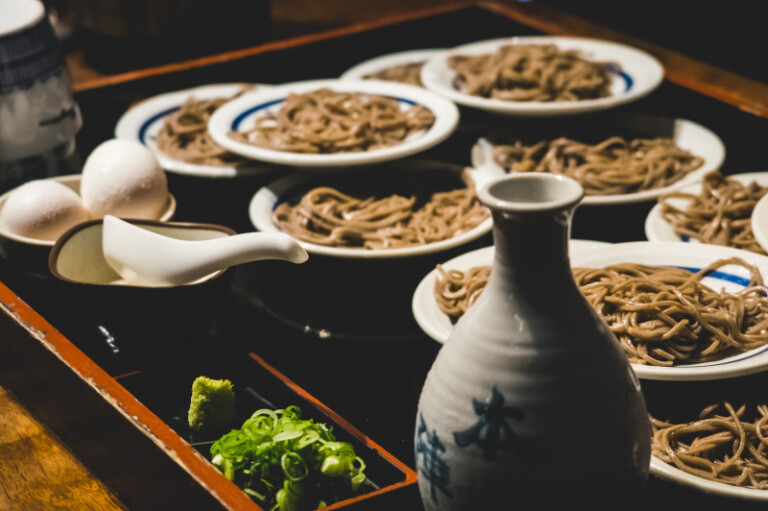
Izushi Castle Town
The historical area of Izushi, the so-called “little Kyoto,” is a beautiful provincial center of medieval Japan, which the local feudal lords carefully arranged in the manner of the imperial capital. There are a few sightseeing attractions here: the walls and towers of the castle, the oldest street clock in Japan (1881), the colorful Inari Shrine, and the old Kabuki theater. In Japan, the town is famous for its buckwheat noodles izushi-soba served on small plates. The tradition of such serving dates to the Edo period when Izushi street vendors began to serve noodles in convenient portions on small plates. Local potters immediately mastered the production of such dishes, which was the beginning of Izushi pottery.
Day 9
Meet your tour guide at the hotel lobby
Himeji and Osaka Sightseeing: walk through the historic Himeji Castle, explore Umeda and its vibrant streets, experience the lively atmosphere of Dotonbori area, and catch the sunset from the Umeda Skybuilding Observatory
Transfer to the hotel
Check-in at the hotel
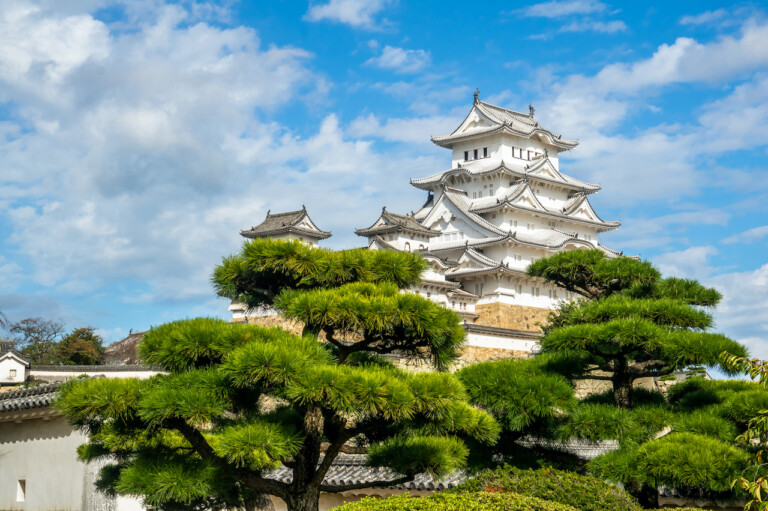
Himeji Castle
Himeji Castle is one of Japan’s 12 historically preserved castles and is considered the most beautiful. It is a UNESCO World Heritage Site. The castle was built in the early 17th century and was second in size and beauty only to the lost Edo Castle, the residence of the Tokugawa shoguns. Unscathed by wars, fires, and natural disasters for 400 years, the castle is often featured in movies about the samurai era. Fans of classic Japanese cinema remember it for Akira Kurosawa’s “Ran.” The impregnable castle holds secrets of Japanese military strategy and keeps stories of gods and ghosts. The name “White Heron Castle” reflects the beauty of its walls.
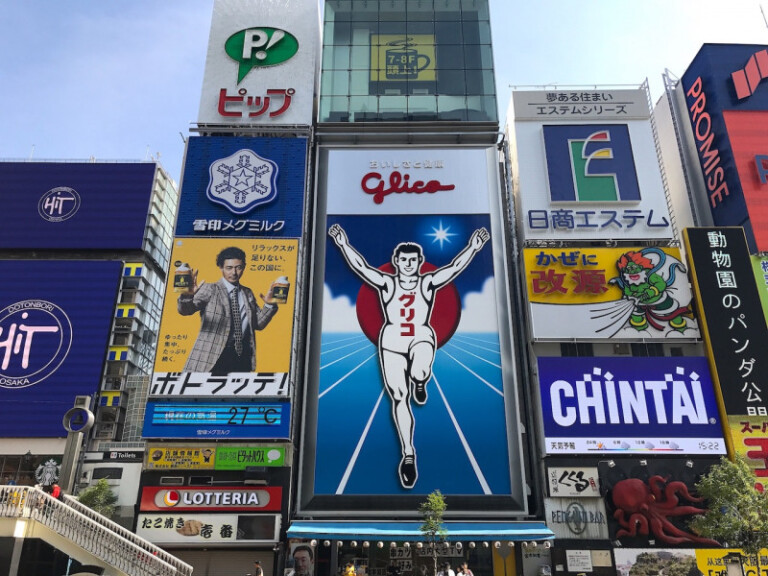
Dotonbori District
Dotonbori is a neighborhood that stretches along the Dotonbori canal between Dotonboribashi Bridge and Nipponbashi Bridge. The history of Dotonbori goes back four hundred years. In the early 17th century, this area was designated for entertainment venues by a government decree. By the end of the Edo era, there were six Kabuki theaters, five Bunraku theaters, and other smaller establishments. A restaurant area eventually grew around the theaters, and the district became one of the most popular places for evening entertainment for citizens and visitors. By now, there’s little left of the traditional theaters, but the area is still famous for its active nightlife, entertainment, and delicious food.
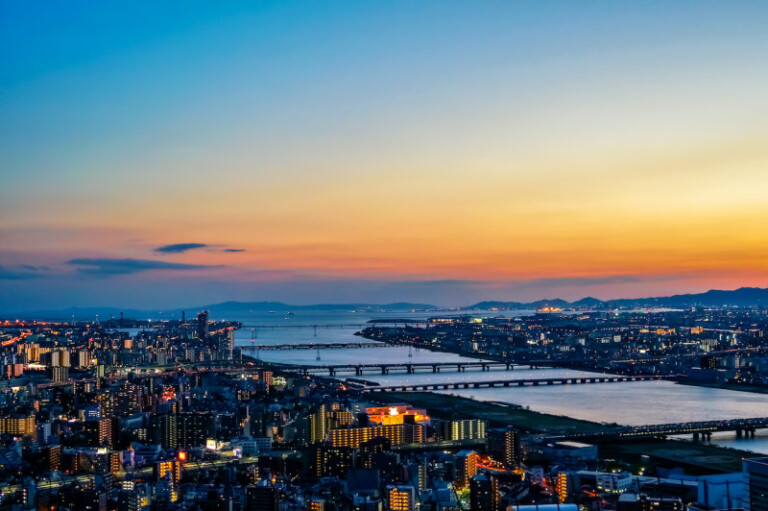
Umeda Sky Building
Designed by architect Hara Hiroshi in 1993, this 173-meter building is the 19th tallest in Osaka and one of the most notable parts of the cityscape. Two forty-story towers are connected at the top by Floating Garden Observatory, whose glass verandas offer beautiful city views. The basement floor, with stores and restaurants, resembles a Japanese city street of the early 20th century. Various companies’ offices occupy the building. There is a lovely park with fountains at the base of the towers.
Day 10
Transfer to the airport Osaka KIX
Departure from Japan
